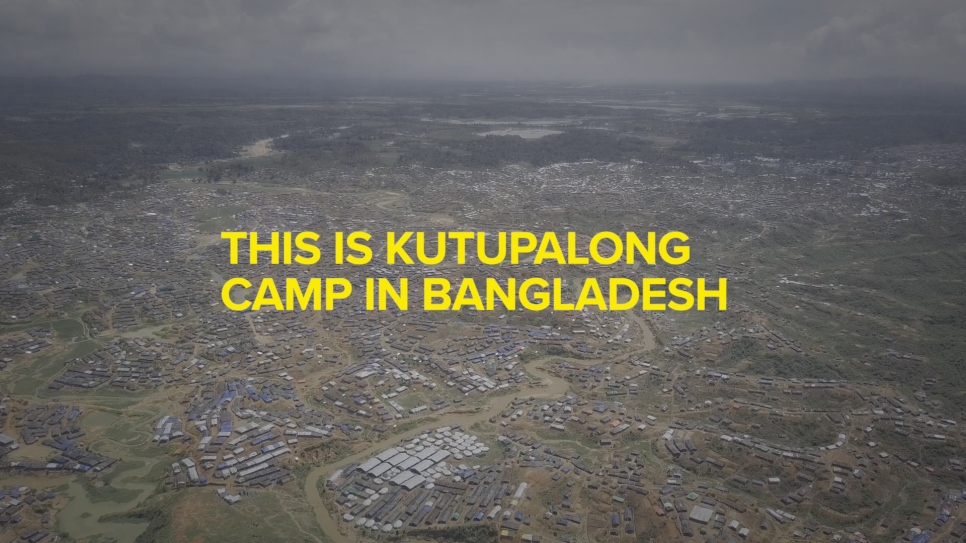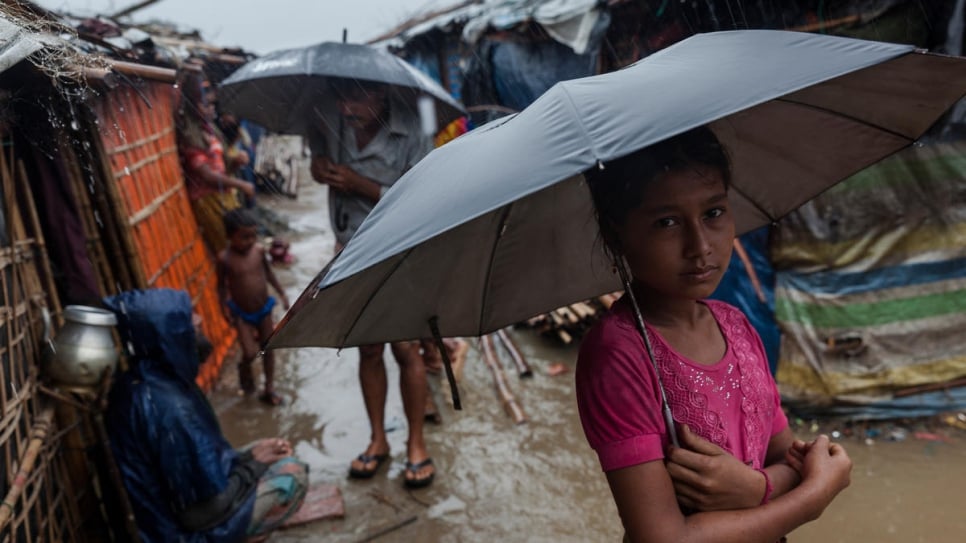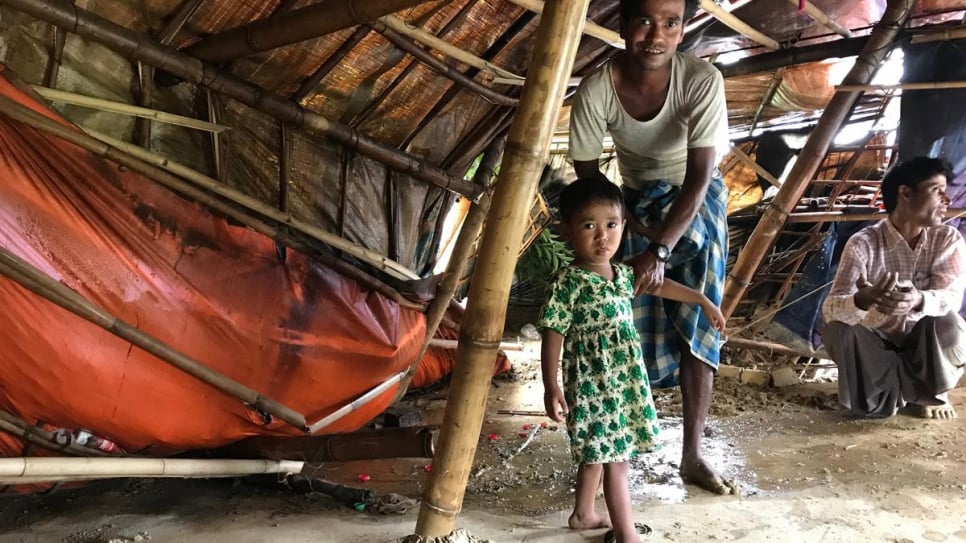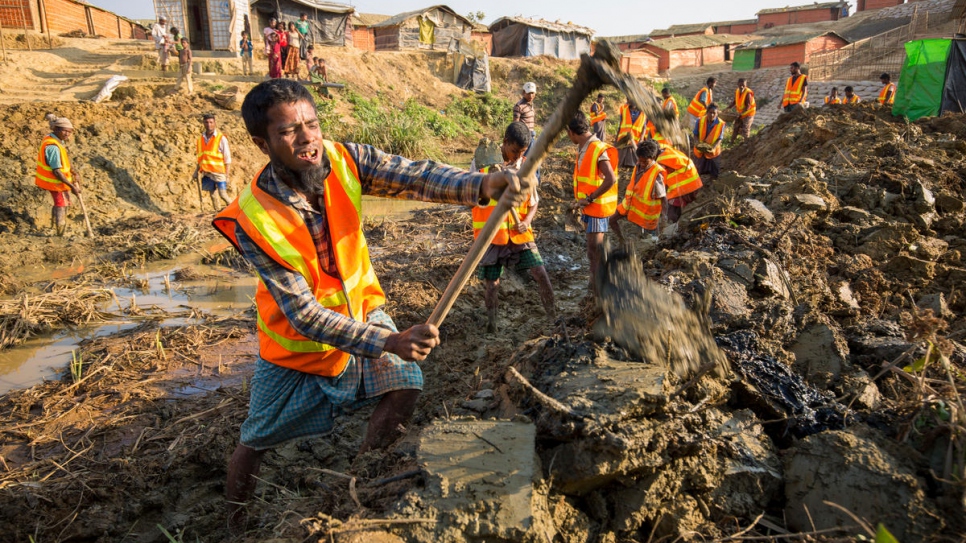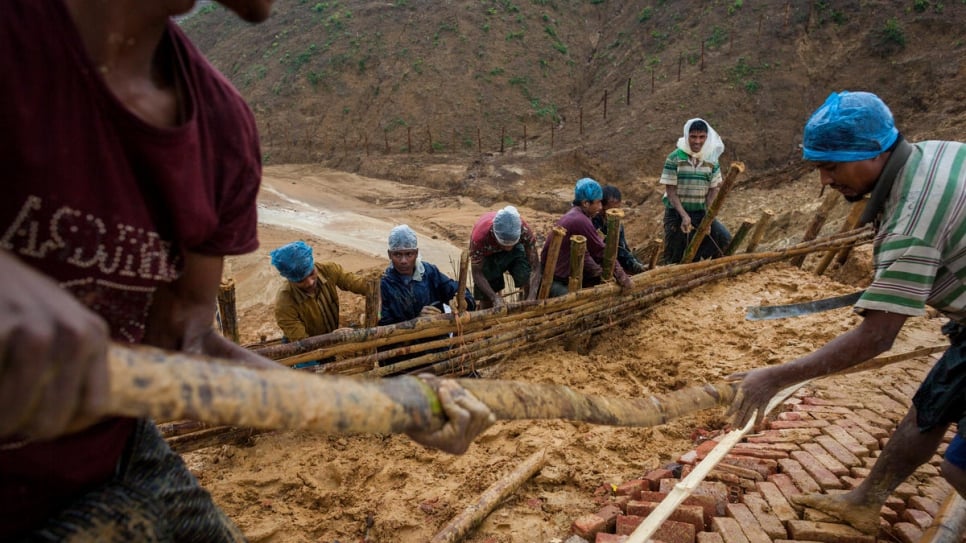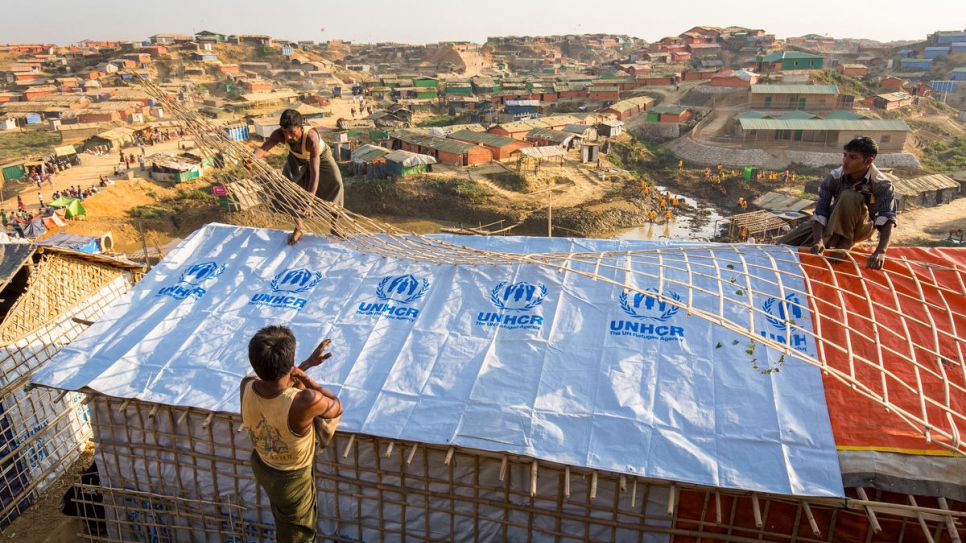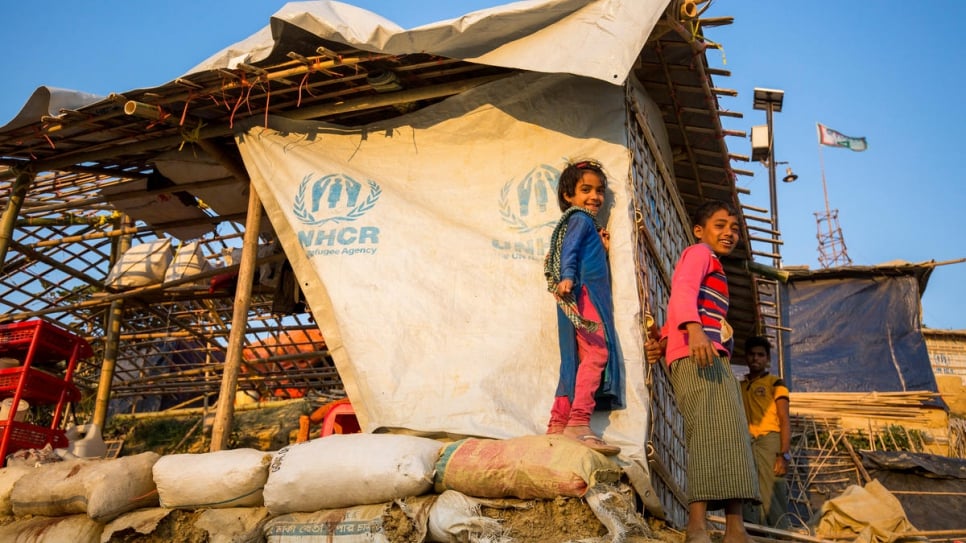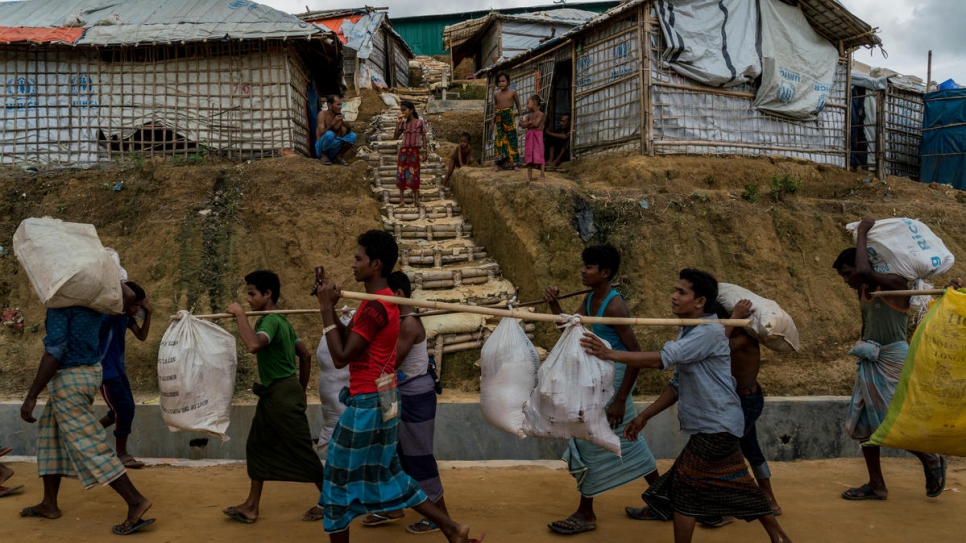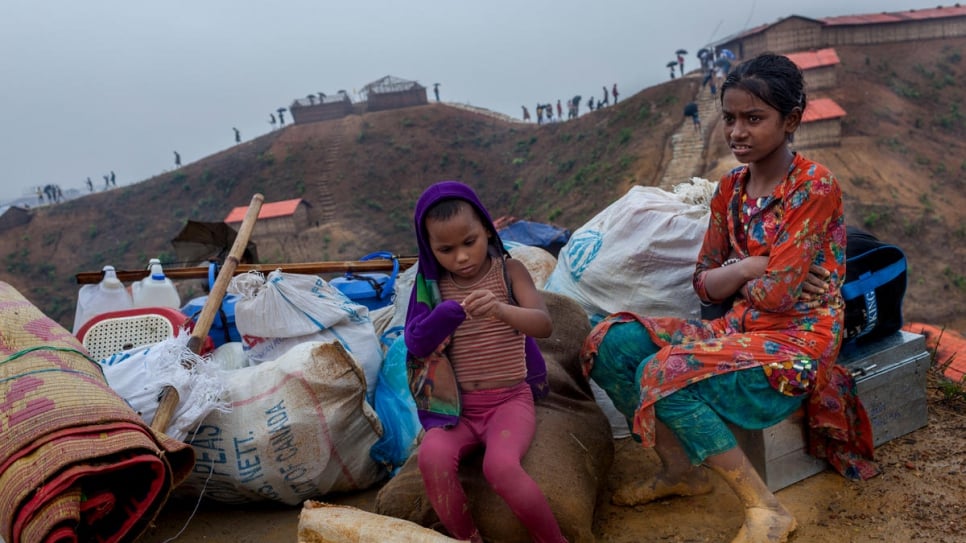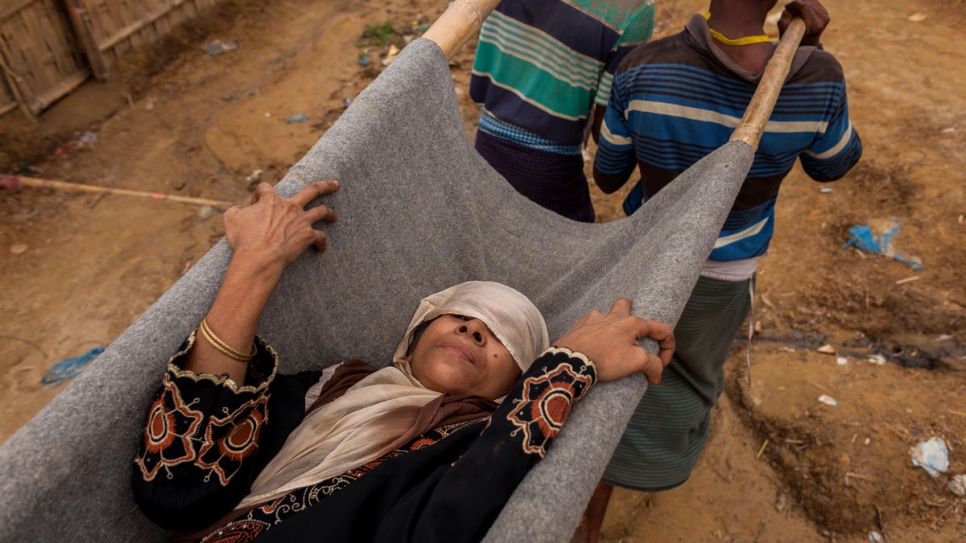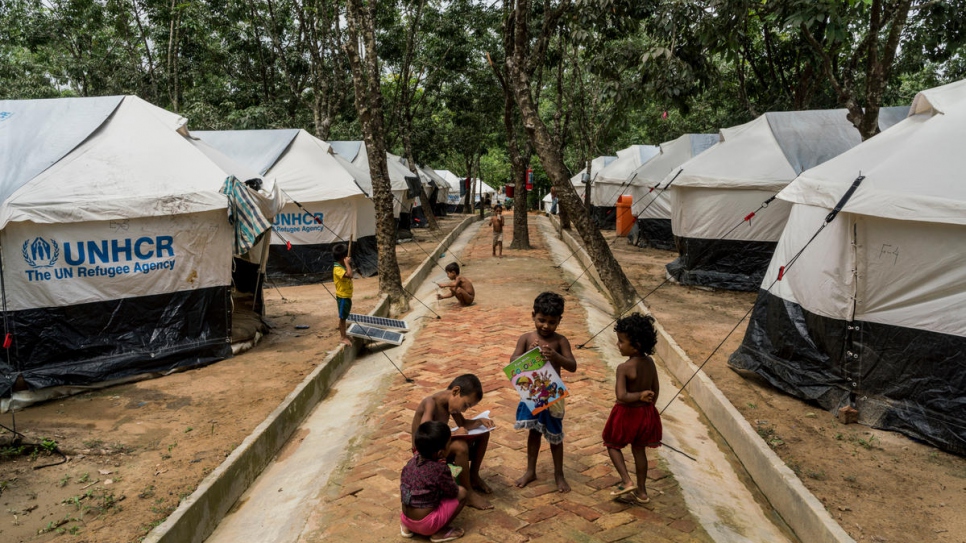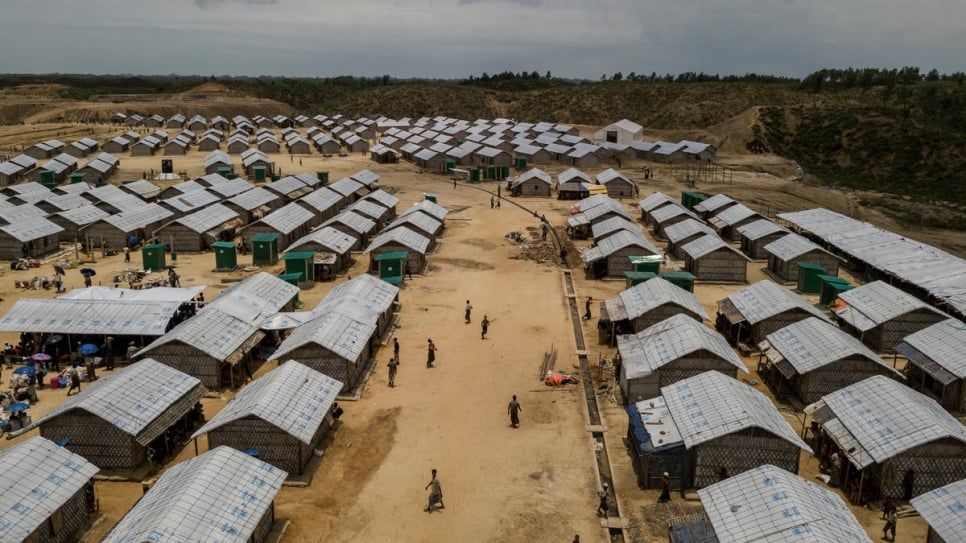Rohingya emergency
Over a million Rohingya refugees have fled violence in Myanmar in successive waves of displacement since the early 1990s.
If you are a refugee and need help, click here for more information.
The Rohingya are a stateless Muslim minority in Myanmar. The latest exodus began on 25 August 2017, when violence broke out in Myanmar’s Rakhine State, driving more than 742,000 to seek refuge in Bangladesh. Most arrived in the first three months of the crisis. An estimated 12,000 reached Bangladesh during the first half of 2018. The vast majority reaching Bangladesh are women and children, and more than 40 per cent are under age 12. Many others are elderly people requiring additional aid and protection. They have nothing and need everything.
- See also: Rohingya Refugee Emergency at a Glance
Nearly all who arrived during the influx have sought shelter in and around the refugee settlements of Kutupalong and Nayapara in Bangladesh’s Cox’s Bazar district. Some have joined relatives there. The enormous scale of the influx is putting immense pressure on the Bangladeshi host community and existing facilities and services.
“They burnt our house and drove us out by shooting. We walked for three days through the jungle.”
Mohammed, who fled to Bangladesh with his family of seven, including a baby born along the way
New spontaneous settlements sprouted overnight, and the Kutupalong refugee settlement has grown to become the largest of its kind in the world. Around 600,000 people are living in an area of just 13 square kilometres, stretching infrastructure and services to their limits.
The Bangladesh government has responded generously throughout the latest crisis. Local Bangladeshi villages have also taken in the new arrivals. They spared no effort to help, straining their already limited resources.
The humanitarian response in Bangladesh remains focused on meeting the massive humanitarian needs and on mitigating the impact of the seasonal monsoon rains. However, additional international support is urgently needed to step up the assistance from purely humanitarian and day-to-day support towards addressing medium-term challenges, including resilience, education, registration, and programmes to protect the most vulnerable refugees – including children, women and people with specific needs.
What is UNHCR doing to help?
Together with our partners, we are working in support of the Bangladesh government to respond to the massive humanitarian needs.
In the opening days, weeks and months of the crisis, UNHCR airlifted more than 1,500 metric tons of emergency life-saving aid to Bangladesh – including blankets, plastic sheets, sleeping mats, family tents, plastic rolls, kitchen sets, jerry cans and buckets.
Together with our partners, we are also helping the government to develop new sites that can safely accommodate refugees. This includes funding a road to facilitate construction and refugee access, supporting site planning, building latrines and wells, improving the water and sanitation facilities and distributing shelter materials.
In an effort to improve sanitation and access to drinkable water, we have built thousands of latrines and water points for the refugees, thereby mitigating the risks of health problems such as acute watery diarrhoea.
UNHCR is working to mainstream refugee protection in all refugee settlements. With its partners, it is developing a referral system and safe spaces for survivors of gender-based violence. We are also enhancing efforts to identify and refer children at risk for the appropriate support.
To find the latest documents and figures on the Rohingya situation, please visit our Data Portal.

